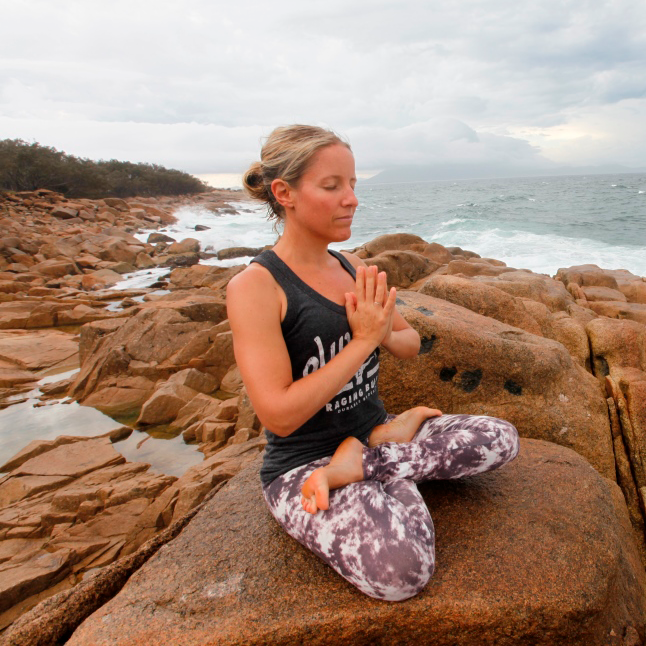For many of us the new year proves a potent time to reflect on the year that was and re-vision our year ahead. Part of this inevitably involves a desire to live healthier, wealthier and wiser in the coming months. Ultimately what most of us want is the same: physical and mental health; peace and freedom from suffering – and perhaps a little wisdom thrown in – as we progress along the path.
Our habits create our reality and if you’re like me you have developed a few negative habits somewhere along the line that you’d like to change into healthier behaviours. The great news is that by keeping things simple, being specific and taking baby steps, changing habits can be done at any time of year. A positive change in habits leads to a positive change in day to day living.
POSITIVE VS. NEGATIVE HABITS
So what might we classify as “positive” habits and “negative” habits? If we can tap into how we feel after eating, drinking or participating in certain activities and notice the impact they have on us we can begin to intuit whether ultimately they are positive or negative for our body, mind and spirit. Positive habits increase our energy while negative habits reduce it. Some positive habits that I KNOW keep me energised are moving my body every day, sitting in meditation each morning and eating fresh, nutritious food. Some negative habits might be eating processed food, staying up late on a screen of some sort or drinking alcohol most days to wind down.
But many of us find that changing habits can be fraught with obstacles. After a couple of weeks our pursuit of these ideals begins to fall apart as we revert to our memorised self amidst the competing demands on our time, energy and sanity. I see this all the time as a yoga teacher. My students knowing and feeling the benefits of regular practice. Wanting to come to class on a weekly basis, only to be persuaded off the path by distractions. Personally I have struggled to maintain the habit of drinking the amount of water that I need to throughout the day – we all have our achilles heel.
CHANGING HABITS & A YOGA PRACTICE
In yoga our habitual mental, emotional and behavioural patterns are called samskaras which can be positive or negative. The negative samskaras are the ruts in the road that we continually find ourselves in time and time again throughout our lives. Generally these habits are unconscious and are part of our conditioning – our default thoughts, feelings, reactions and behaviours. We can spend years not even realising that these behaviours, thoughts and emotions are creating our suffering or that we even have an alternative.
Regular yoga practice burns off our samskaras by bringing awareness to the mind – where samskaras are stored. If we make no effort towards becoming aware of our negative samskaras in order to change them then we will continue along the same path of suffering.
Are you as at ease in life as you’d like to be? Would you like to bring more awareness to how your daily actions are impacting your body, mind and spirit? Then here are 5 ways to begin making conscious choices that are deeply nourishing to the kind of life you want to live.
5 TIPS FOR STAYING ON THE WAGON THIS YEAR
1. CREATE YOUR INTENTION (SANKALPA)
Create an intention that will anchor you to the goals you wish to achieve and the healthier habits you wish to cultivate. Consider why you want these things to happen for you – your “why” creates the energy to propel you forward. Write your intention and place it somewhere that you can read it every day. An example of this may be ‘I have abundant energy.’ or ‘I have a calm mind and strong body.’
2. INCORPORATE DAILY ROUTINES THAT WILL HELP YOU ACHIEVE YOUR INTENTION:
These routines should be specific, measurable and easy to do – keep it simple and focus on one per week. Small baby steps add up over time! In Ayurveda (the system of traditional medicine that is native to India and the sister science of yoga) these daily routines are called dinacharya and we begin by making a choice to practice these for our own self care and nourishment.These small daily acts can set you up to thrive.
Some examples of Ayurvedic daily routines are:
- scraping your tongue upon rising to rid the body of toxins that have been released on the tongue overnight
- drinking warm water or a cup of tulsi tea soon after you wake to flush the system and improve elimination
- Moving and breathing for 20 minutes before you start your day to improve circulation, build strength and increase energy flow.
Incorporating these daily routines gives you the opportunity and time to think about achieving your intentions.
3. CREATE A TRIGGER FOR THE HEALTHY HABITS YOU WISH TO CULTIVATE
B.J Fogg, a researcher and teacher at Stanford University who has become an expert in behaviour design teaches that “no behaviour happens without a trigger.” To find the trigger for a better habit use this sentence from Fogg:
“Right after… I will…”
Example: Right after I wake up I will drink a glass of warm water.
Fogg states that the best triggers are: location, time, emotional state, other people or an immediately preceding action. His 3 steps method for changing habits is:
- Get Specific (Turn target outcomes into specific behaviours. E.g. drink a glass of water)
- Make it easy (How can you make the behaviour easy to do? E.g. just a glass of water)
- Trigger the behaviour (What will prompt the behaviour? E.g right after I wake up)
Once we create triggers for our daily routines and practise them daily, they become our habits. We no longer have to think about them and we can move onto the next habit.
4. SLOW DOWN AND CULTIVATE STILLNESS
While creating a life we want involves effort, we can become attached to the outcome and lost in the “doing”. By being still and quiet, even just for a couple minutes a day we can start to listen to what our body needs.
If you find it hard to sit and meditate begin with deep abdominal breathing each morning after you wake. Breath in for 4 seconds to fill the lungs and expand the belly and out for 4. Keeping the chest as still as you can. Repeat for 2 minutes and gradually increase. This will help focus the mind and cultivate inner calm so that you can move ahead with clarity. If you still find this difficult, try a guided meditation app which can keep your mind from wandering.
5. BEGIN OR RAMP UP YOUR YOGA PRACTICE
Yoga allows you to uncover a sense of wholeness in your life. It brings an inner peace that can withstand the stresses and strains of daily busy-ness. As you bring awareness to your body and the patterns of movement or limitation there, you can begin to take this reflective approach into your life off the mat. This helps bring your own mental, emotional and behavioural patterns into the light of awareness (vidya).
We’d love to know what your intentions are for creating true wellness in body, mind and spirit this year. What specific, measurable actions can you take each day to achieve your desired outcome? Changing habits can be a challenge but with these 5 steps you are well on your way to making changes that last.
Emma Waters, Jala Yoga
Emma Waters is a 200-hr trained Akhanda yoga teacher. She has practised Iyengar Yoga for most of the 15 years of her practice, including 2 months with Pankaj Sharma in Rishikesh, India, in 2003 and many years under the guidance of Iyengar teacher Susan Stackhouse. She has attended various intensives and retreats with Nicky Knoff, Clive Sheridan, Glenn Ceresoli, Peter Scott and Simon Marrocco.
Emma has been a primary school teacher for 14 years and currently teaches in Byron Bay. Not only is she a talented teacher and yogi but she is also an experienced surfer having travelled to surf destinations around the world. Most importantly Emma is a mum to her 6 year old daughter Mali.
JOIN OUR TRUE WELLNESS REVOLUTION
Subscribe to our newsletter for up-to-date news, new products, special offers and be apart of our beautiful community inspiring True Wellness for all.



